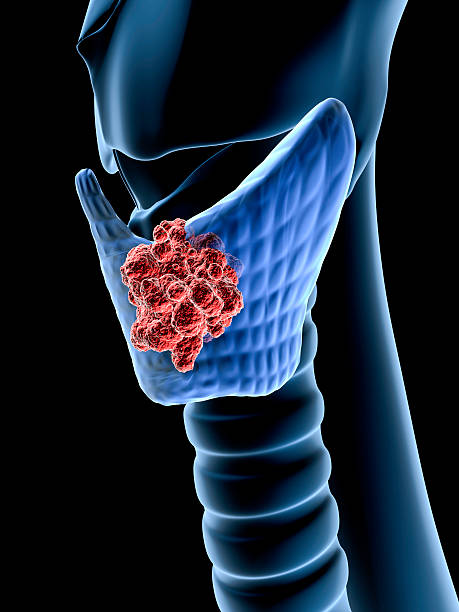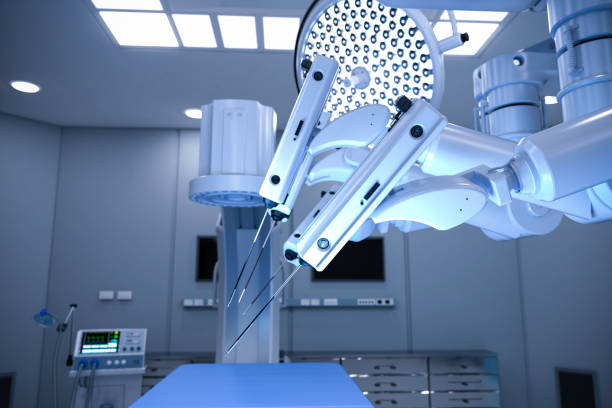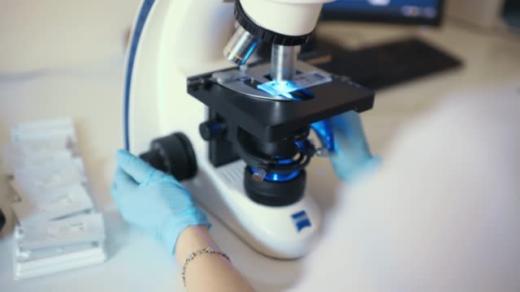Follicular Neoplasm: Nature, Diagnosis, and Treatment
This page discusses the steps of management of follicular neoplasm. The RABIT technique of robotic thyroidectomy has become the standard of care for follicular neoplasm. Dr. Sandeep Nayak has pioneered this scarless thyroid surgery. He is one of the world’s most renowned thyroid surgeons.
The information on this site is created under the guidance of MACS Clinic and Dr. Sandeep Nayak. He is a prominent surgical oncologist in India who operates out of major hospitals in Bangalore. This site is regularly updated with new and accurate information.
Overview of Follicular Neoplasm
Thyroid tumors that are difficult to diagnose as benign or cancerous are classified as Follicular neoplasms. In India, around 15% of thyroid nodule cases are diagnosed as follicular neoplasms. Globally, they account for approximately 10-15% of thyroid cancers. These statistics may seem overwhelming. But understanding the condition is the first step towards empowerment and effective management.
Discover the specifics of this thyroid condition and its implications.
What is Follicular Neoplasm of Thyroid?
Follicular neoplasm is a medical term referring to a tumor found in the thyroid gland. This diagnosis is typically made after fine-needle aspiration cytology (FNAC) procedure. It is important to note that follicular neoplasm is a primary or initial diagnosis. It can refer to both cancerous and non-cancerous conditions.

Adenomatoid nodule:
Adenomatoid nodules are benign growths found in the thyroid gland. They are commonly associated with nodular thyroid hyperplasia.
Follicular adenoma:
It is a benign thyroid tumor. The tumor cells are separated from the healthy thyroid gland by a thin tissue barrier called a capsule.
Follicular carcinoma:
It is a form of thyroid cancer. In most cases, the tumor is partially separated from the healthy thyroid gland by a thin barrier known as a capsule. The tumor cells in follicular carcinoma resemble those in a follicular adenoma. However, the critical difference is that in follicular carcinoma, the tumor cells penetrate the capsule and spread into the surrounding thyroid gland.
Non-invasive follicular thyroid neoplasm with papillary-like nuclear features (NIFTP):
It is a benign tumor of the thyroid gland. NIFTP has a capsule that surrounds it, separating it from the normal thyroid gland.
Follicular variant of papillary thyroid carcinoma:
The follicular variant of papillary thyroid carcinoma is a type of thyroid cancer. Most tumors are partially separated from the normal thyroid gland by a capsule. The cells in a follicular variant of papillary thyroid carcinoma resemble those in an NIFTP. The most crucial difference is that in follicular variant papillary thyroid carcinoma, the tumor cells cross the capsule and spread into the surrounding thyroid gland.
Need Assistance ?
Are you seeking clarity on follicular neoplasm? Reach out for expert insights today.
Learn about the diagnostic procedures involved in identifying Follicular Neoplasm.
How Do Pathologists Make This Diagnosis?
Often, pathologists conduct the follicular neoplasm diagnosis through fine-needle aspiration cytology (FNAC) procedure. It involves taking a small tissue sample from the concerned area.
Under the microscope, the follicular neoplasm cells resemble normal follicular cells. However, the sizes of the follicles are usually smaller, and are termed as microfollicles.
The follicular cells may be found either as single-detached or in small groups.
In your report, the pathologist may describe cells as “atypical”. This is when the cells have an abnormal shape, colour, or size compared to healthy follicular cells. Atypical cells can be a sign of cancer, infection, radiation exposure, medication side effects, or inflammation.

Need Assistance ?
Need assistance navigating the diagnosis of follicular neoplasm? Connect with us for expert guidance.
Understand the steps following a diagnosis of Follicular Neoplasm and available treatment options.
What Happens Next?
Often, healthcare providers recommend surgery to treat the follicular neoplasm of thyroid. Based on the diagnosis, the surgeon may remove half or the whole thyroid gland with the tumor.
Surgery is necessary as there is a 20% risk of cancer in follicular neoplasm. Not observing these may lead to the progression and spread of these cancers. Depending on the final diagnosis, your doctor may offer additional treatments.
Patients can choose between conventional open, endoscopic or robotic thyroidectomy. Dr. Sandeep Nayak, the inventor of the RABIT technique, believes that robotic thyroidectomy offers several advantages over open surgery. For best results, always choose seasoned thyroid surgeons.

Please visit the dedicated page on robotic surgery.
Follicular Neoplasm of Thyroid Treatment
To determine your exact condition, your doctor will recommend:
Complete tumor removal
Microscopic examination of the tumor
In particular, the pathologist must evaluate if a capsule surrounds the tumor
And whether the cells inside the tumor have spread into the surrounding thyroid gland

This diagnostic examination can only be conducted after complete tumor removal. Only then you will receive the final diagnosis report.
Tumor removal can either be:
Hemithyroidectomy (surgical removal of half of the thyroid gland)
Total thyroidectomy (surgical removal of the entire gland)
Please visit the dedicated page on surgeries of thyroid and parathyroid glands.
Surgeons can perform these procedures by conventional open or robotic surgery. Dr. Sandeep Nayak executes most thyroid surgeries using the RABIT technique.
If a hemithyroidectomy is completed and the final microscopy report indicates cancer, a completion thyroidectomy may be necessary.
How to Become Our Patient!
Our center receives numerous patients from various parts of the world every year. With our extensive experience, we have made the treatment process hassle-free. On a single trip, you can visit Bangalore, India, for your evaluation, scans, biopsy, and surgery.
We understand that follow-up appointments can be inconvenient. That’s why we offer online consultations for your comfort. We will also help you with post-operative treatment in your country or hometown. So, you don’t have to return to Bangalore, India.
If you want to become our patient, please click here to learn more about the complete process.

Need Assistance ?
Need more information? Reach out to our knowledgeable team for personalized assistance.
Get answers to common queries about Follicular Neoplasm and its management.
Frequently Asked Questions
What are the symptoms of follicular neoplasm of thyroid?
Follicular neoplasm symptoms may include:
- a painless lump in the neck
- difficulty swallowing
- changes in voice in severe cases
However, many cases present with no noticeable symptoms.
Is follicular neoplasm cancerous?
While it can be cancerous, most cases are benign (non-cancerous). Further evaluation through biopsy is crucial for accurate diagnosis.
What are the treatment options for follicular neoplasm?
Treatment depends on various factors, including whether the neoplasm is benign or malignant. Treatment options may include:
- Surgery
- Radioactive iodine therapy
- Hormone replacement therapy
Are there any dietary restrictions for substernal goiter patients?
There are no specific dietary restrictions. Yet, maintaining a balanced diet rich in iodine is essential. Avoiding excessive intake of goitrogenic foods is also beneficial. These include eggs, broccoli, cauliflower, tea, red wine, soy products, peanuts.
What is the prognosis for follicular neoplasm?
The prognosis for follicular neoplasm varies based on size, stage, and spread. Timely diagnosis and treatment can improve outcomes.
Can follicular neoplasm recur after treatment?
Recurrence is possible. Especially if not all affected thyroid tissue is removed during surgery. Regular follow-ups are essential for monitoring.
How long does it take to recover from follicular neoplasm surgery?
Recovery time varies. It depends on the extent of surgery and individual factors. Most patients can resume normal activities within a few weeks.
What are the potential complications of untreated follicular neoplasm?
Left untreated, follicular neoplasm can spread to other body areas. This can lead to more severe health issues.
How often should I have follow-up appointments after follicular neoplasm of thyroid treatment?
Follow-up appointments are typically scheduled based on individual factors and treatment protocols. Your doctor will advise you on the appropriate frequency of follow-up
What is the follicular neoplasm survival rate?
The follicular neoplasm survival rate varies depending on several factors. These include tumor stage, treatment, and individual health factors. It’s essential to discuss prognosis with a healthcare provider for personalized information.
